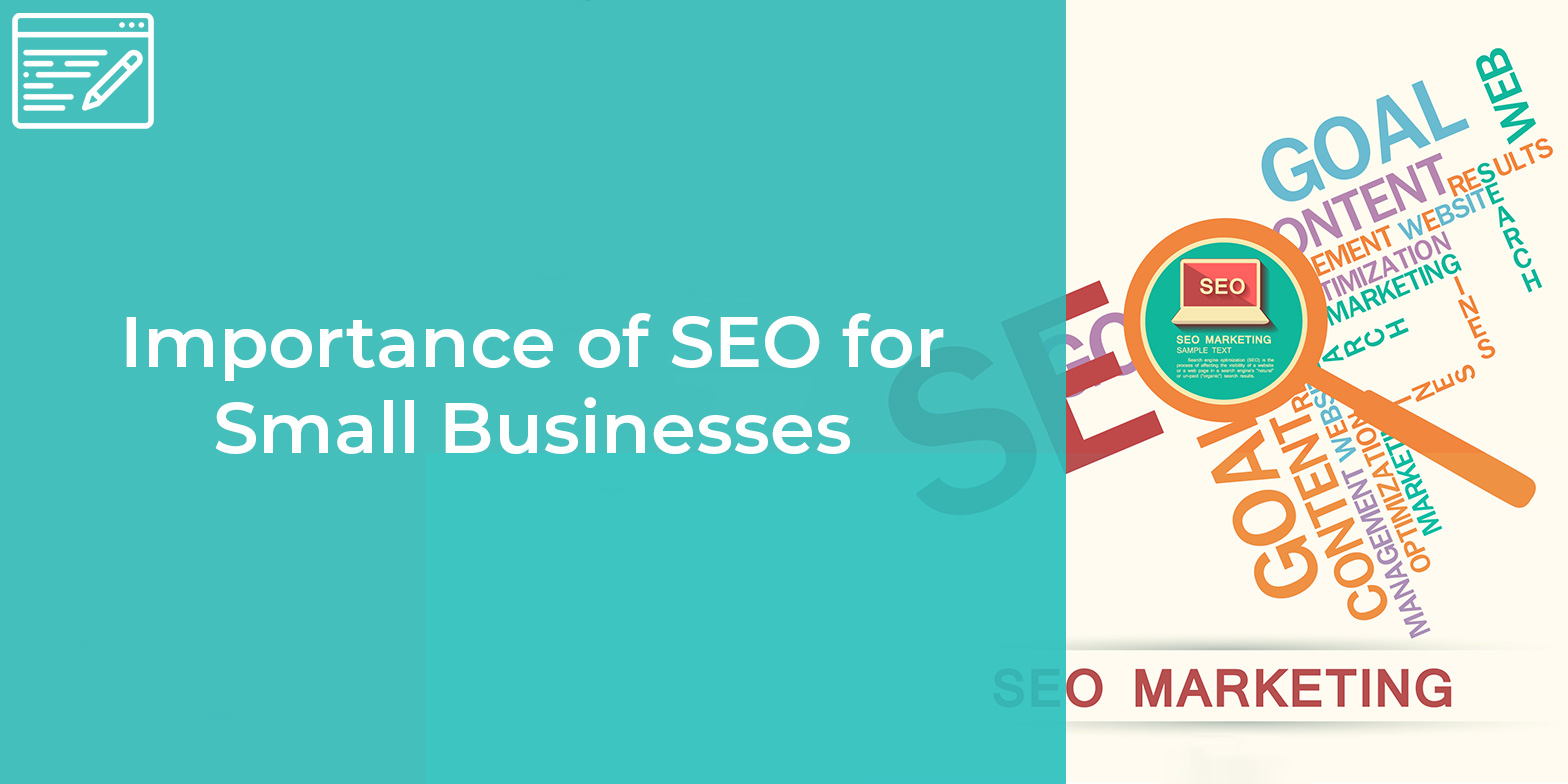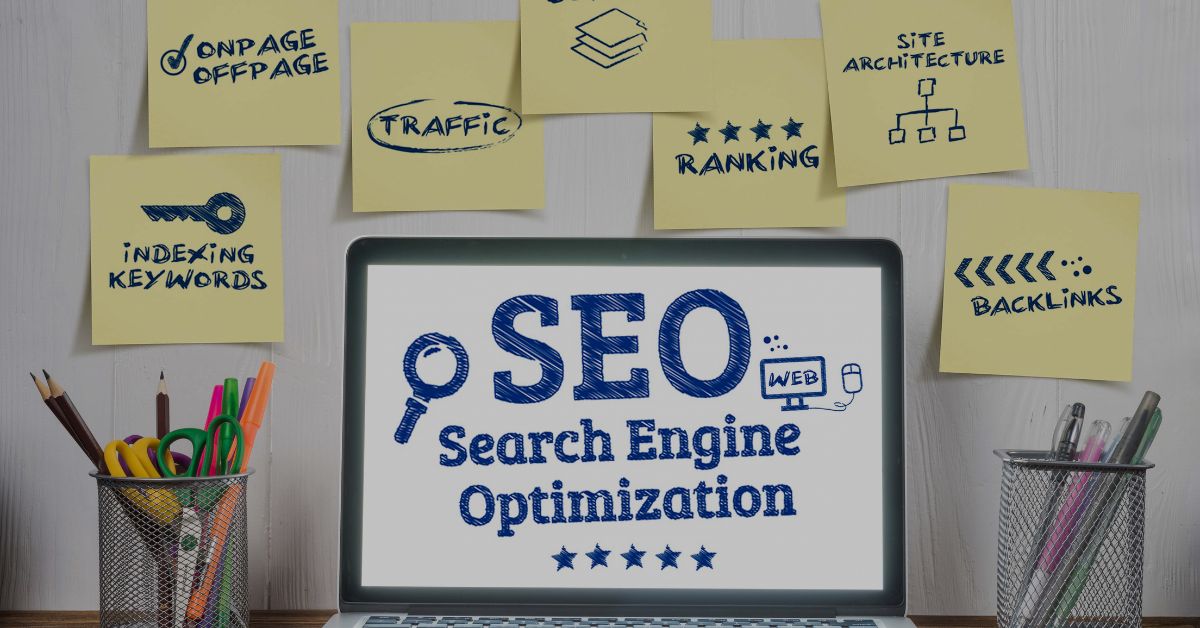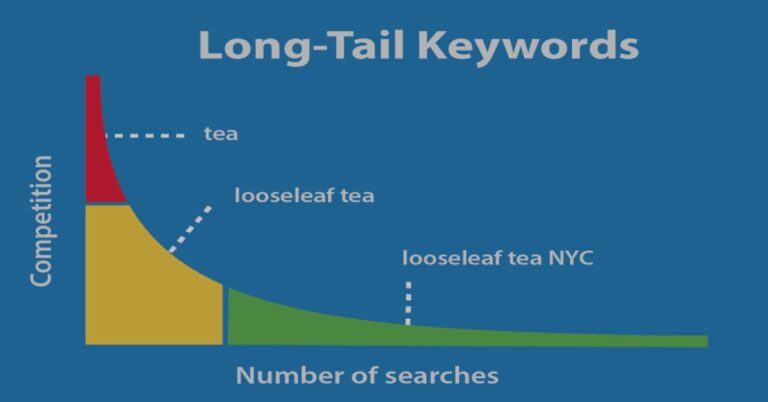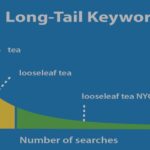Imagine you’ve built the most amazing online store, packed with great products and stunning design. But there’s a catch: no one knows it exists.
If your website is lost in the vast ocean of the internet, it’s like having a beautiful shop with no visitors. This is where SEO, or Search Engine Optimization, becomes your most powerful ally. Think of SEO as the beacon that guides potential customers straight to your digital doorstep.
Are you ready to unlock the secret to attracting more traffic, boosting your sales, and outshining your competitors? Dive into this article and discover why SEO is the heartbeat of every successful online business website. You won’t want to miss a single insight!

Seo Fundamentals
Understanding SEO fundamentals is crucial for online business success. SEO helps websites rank higher in search engines. It attracts more visitors and potential customers. Without SEO, your site might remain invisible to users. This section will delve into essential SEO basics.
Understanding Keywords
Keywords are the backbone of SEO. They are the words users type in search engines. Choose relevant keywords for your business. Use tools to find popular search terms. Incorporate them naturally in your content. Avoid keyword stuffing. It lowers content quality.
On-page optimization improves individual web pages. It enhances their rank and visibility. Include keywords in titles and headings. Use meta descriptions effectively. They should be concise and engaging. Ensure your URLs are clean and relevant. These elements make your content user-friendly.
Quality Content
Content is king in SEO. Provide valuable information to your audience. Write engaging and informative articles. Use a friendly tone and simple language. Keep content fresh and updated. Quality content encourages user interaction. It improves your site’s authority.
Site Structure
A well-structured site is crucial. It helps search engines crawl your pages. Organize content with clear navigation. Use categories and subcategories effectively. Ensure fast loading times. Mobile-friendly design is essential. A good structure enhances user experience.

Search Engine Algorithms
Understanding search engine algorithms is crucial for online success. These algorithms are complex systems used by search engines to determine the ranking of websites. They evaluate many factors to ensure users get the most relevant results. For businesses, knowing how these algorithms work is key. It helps in optimizing the website for better visibility.
Understanding Search Engine Algorithms
Search engine algorithms are not static. They change regularly to improve user experience. These changes can impact website rankings significantly. Website owners must stay updated. Adapting to these changes ensures better search results.
Factors Influencing Search Engine Algorithms
Many elements affect how algorithms rank websites. Keywords, content quality, and user experience are a few examples. Search engines look for relevant and well-structured content. They also consider website loading speed and mobile-friendliness. Meeting these criteria can enhance your site’s ranking.
Importance Of Keeping Up With Algorithm Updates
Algorithm updates can affect your website’s performance. Staying informed about these updates is vital. It helps in adjusting your strategy accordingly. Regular monitoring of these changes can prevent sudden drops in rankings. This proactive approach maintains a stable online presence.
How To Optimize For Search Engine Algorithms
Focus on creating high-quality content. Use relevant keywords naturally. Ensure your website is easy to navigate. Improve loading speeds and make it mobile-friendly. These practices align with algorithm requirements. They boost your site’s visibility.
Keyword Strategy
Effective keyword strategy boosts website visibility. It helps target the right audience, increasing traffic and potential sales. A well-structured approach enhances search engine rankings, making your online business more accessible.
In the digital age, the right keyword strategy can be the difference between your online business thriving or simply surviving. Keywords are not just words; they are the bridge that connects your content with the audience actively searching for it. By strategically choosing and using keywords, you can significantly increase your website’s visibility and attract more potential customers.
Understanding Keywords
Keywords are the words and phrases people type into search engines when looking for information. They are the foundation of SEO. When you understand what your audience is searching for, you can tailor your content to meet those needs. This alignment not only helps in drawing traffic but also in enhancing user satisfaction.
Long-tail Keywords: The Secret Weapon
Long-tail keywords are specific phrases that are less competitive but highly relevant. They may attract less traffic, but that traffic is often more qualified. For example, “best organic coffee beans in Seattle” targets a very specific audience ready to make a purchase.
Using Keyword Tools
There are several tools available to help you identify the right keywords. Tools like Google Keyword Planner and Ubersuggest can provide insights into search volume and competition. By using these tools, you can discover which keywords will give you the best return on investment.
Integrating Keywords Naturally
It’s crucial to place keywords naturally within your content. Overstuffing can lead to penalties from search engines. Aim for a smooth flow where keywords fit organically. Ask yourself, “Does this read naturally?” If it feels forced, revise it.
Monitoring And Adjusting Your Strategy
SEO is not a one-time task. Regularly monitor your keyword performance and be ready to adjust your strategy. If a keyword isn’t performing, replace it with one that might yield better results. This iterative process will help keep your content relevant and competitive. Have you ever wondered why some websites always appear on the first page of search results? It’s often due to a well-crafted keyword strategy. Implementing a thoughtful approach to keywords can be a game-changer for your business. Are you ready to refine your strategy and boost your online presence?
On-page Optimization
On-page optimization is a cornerstone of effective SEO strategies. It focuses on improving elements within your website. These elements enhance visibility and user experience. Success in SEO starts with strong on-page optimization. This section explores crucial aspects of on-page SEO. Each aspect contributes to higher search rankings.
Title Tags And Meta Descriptions
Title tags are crucial for search engines. They inform users about page content. A well-crafted title tag attracts clicks. Keep it concise and relevant. Meta descriptions appear below title tags. They summarize page content. Use engaging language in meta descriptions. This encourages users to visit your site.
Header Tags
Header tags organize content into sections. They help search engines understand structure. Use H1 for the main title. H2 and H3 for subheadings. This hierarchy aids readability. It also enhances user experience. Search engines value well-structured content. Proper use of header tags boosts SEO performance.
Keyword Optimization
Keywords are vital in on-page optimization. They reflect user search intentions. Integrate them naturally into your content. Avoid keyword stuffing. Use primary keywords in titles and headers. Secondary keywords should support main topics. This strategy improves content relevance. Search engines reward relevant content with better rankings.
Image Optimization
Images enhance user engagement. Optimize them for faster page loads. Use descriptive file names. Include alt text for accessibility. Alt text helps search engines understand images. Properly optimized images improve SEO. They also enhance user experience.
Internal Linking
Internal links connect pages within your site. They guide users to relevant content. They also help search engines crawl your site. Use descriptive anchor text. This provides context for linked content. Internal linking improves site navigation. It enhances user engagement and SEO ranking.
Off-page Techniques
Off-page SEO techniques are vital for online businesses. They boost your website’s visibility and credibility. They focus on activities outside your site. These techniques help improve your search engine rankings.
1. Backlink Building
Backlinks are links from other websites to your site. They act like votes of confidence. More quality backlinks mean more trust from search engines. Reach out to industry leaders. Request links from relevant sites. Avoid spammy links. They can harm your rankings.
2. Social Media Engagement
Social media platforms offer vast audiences. Share your content on these platforms. Engage with your followers. Respond to comments and messages quickly. This interaction boosts your brand’s visibility. It also creates more traffic to your website.
3. Guest Blogging
Guest blogging involves writing for other websites. It helps you reach new audiences. Choose reputable sites in your niche. Provide valuable and relevant content. Include a link back to your website. This builds authority and drives traffic.
4. Influencer Collaborations
Collaborate with influencers in your industry. They have established trust with their followers. Their endorsement can boost your brand’s credibility. Ensure the influencer’s audience aligns with your target market. This ensures effective engagement.
5. Online Directories and Listings
List your business on online directories. Ensure your information is consistent across all platforms. This helps search engines verify your business. It also increases your online presence. Choose reputable directories for listing.
6. Forum Participation
Participate in industry-related forums. Share your expertise. Answer questions and engage in discussions. This builds your credibility. Include a link to your website in your forum signature. This drives traffic to your site.

Seo And User Experience
SEO boosts online visibility for businesses. It enhances user experience by making websites easy to navigate and find. A well-optimized site attracts more visitors and keeps them engaged.
In the digital age, SEO and user experience are two sides of the same coin, crucial for every online business. While SEO helps your website get discovered, a great user experience ensures visitors stay and engage. Balancing these elements can lead to higher conversion rates and a loyal customer base.
Seo: Your Website’s First Impression
Imagine a user landing on your website. SEO is the pathway that brought them there. It’s the first impression, akin to the neon sign inviting customers into a store. A well-optimized site appears in search results, meeting users’ expectations with relevant content. If your website aligns with their needs, they’re more likely to stay and explore.
User Experience: Keeping Visitors Engaged
User experience is about the journey your visitors take once they’re on your site. It’s not just about aesthetics; it’s about functionality and ease of navigation. If your site is intuitive and loads quickly, users feel comfortable. They browse longer, increasing the chance of conversions. This is where SEO complements user experience by ensuring fast load times and mobile responsiveness.
Think about the last time you visited a cluttered website. Frustrating, right? Simple navigation keeps users happy and engaged. Ensure your menus are easy to find and use. Streamlined navigation helps users find what they need quickly, reducing bounce rates.
Content Relevance: Meeting Expectations
Content is king, but relevance is its crown. When users find content that resonates with their search intent, they’re more likely to engage. Use SEO to target specific keywords that match user queries. This ensures your content meets expectations, creating trust and encouraging return visits.
Mobile Optimization: Reaching Users On The Go
In today’s mobile-centric world, optimizing your site for mobile devices is essential. A poor mobile experience can drive users away. Ensure your website is responsive, adapting to various screen sizes. Mobile optimization is a critical aspect of SEO that enhances user experience, increasing accessibility for all users.
Connecting Seo And User Experience
How can you ensure SEO and user experience work hand in hand on your site? Reflect on your own browsing habits. You prefer sites that load quickly, have relevant content, and are easy to navigate, right? Focus on these elements to keep your visitors engaged. By prioritizing SEO and user experience, you create a harmonious online environment. This leads to better engagement, higher retention rates, and ultimately, a successful online business. Are you ready to enhance your website’s potential?
Measuring Seo Success
Understanding how to measure SEO success is crucial for any online business. It’s not just about getting high rankings on search engines; it’s about knowing what works and what doesn’t. Effective measurement can guide your next steps and help you maximize your online presence. But how do you know if your SEO strategies are paying off? Let’s dive into some key metrics and tools that can help you assess your SEO performance.
Tracking Organic Traffic
Organic traffic is a key indicator of SEO success. When your website attracts visitors through search engines without paid ads, it shows your content is valuable and relevant. Monitor your organic traffic using tools like Google Analytics. This tool gives insights into the number of visitors and their behavior on your site. A steady increase in organic traffic means your SEO strategies are working.
Analyzing Conversion Rates
High traffic is great, but conversion rates tell the real story. Are visitors taking action—buying products, signing up for newsletters, or downloading resources? Use conversion tracking tools to measure how effectively your site turns visitors into customers. A boost in conversion rates often reflects successful SEO tactics, aligned with your business goals.
Monitoring Keyword Rankings
Keyword rankings are essential for gauging SEO success. Track where your site stands for target keywords using tools like SEMrush or Ahrefs. Improved rankings can lead to more visibility and traffic. But remember, it’s not just about ranking number one; it’s about ranking for the right keywords that drive relevant traffic.
Evaluating Bounce Rate
Bounce rate measures how quickly visitors leave your site without interacting. A high bounce rate might indicate that your content isn’t meeting user expectations. Analyze this metric to refine your content strategy. Lowering bounce rates can enhance user engagement and improve overall SEO performance.
Assessing Page Load Speed
Page load speed is crucial for user experience and SEO success. Slow-loading pages can frustrate visitors and increase bounce rates. Use tools like Google PageSpeed Insights to evaluate and improve your site’s speed. Faster pages keep visitors engaged and boost your chances of ranking higher on search engines.
Measuring SEO success involves more than just tracking a few metrics. It’s about understanding the story behind the numbers and using them to shape your strategy. Are you leveraging these metrics to their fullest potential? How will you adapt your SEO strategies based on what you discover? The answers to these questions can transform your online business.
SEO plays a vital role in online success. It boosts visibility and attracts more visitors. Without SEO, websites struggle to reach potential customers. It enhances user experience and increases credibility. Search engines favor optimized sites, leading to higher rankings. SEO is not a one-time task but a continuous process.
Regular updates and monitoring are necessary. Investing time in SEO can lead to growth. It helps businesses compete in the digital world. For online success, prioritize SEO strategies. This ensures your website stands out and thrives.







